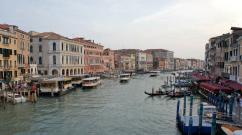World War II naval mines device. “Horned Death” and others
Sea mines a weapon (a type of naval ammunition) to destroy enemy ships and hinder their actions. Main properties of M. m.: constant and long-lasting combat readiness, surprise of combat impact, difficulty in clearing mines. Mine mines can be installed in enemy waters and off their own coast (see Minefields). A mine is an explosive charge enclosed in a waterproof casing, which also contains instruments and devices that cause a mine to explode and ensure safe handling. The first, although unsuccessful, attempt to use a floating mine was made by Russian engineers in the Russian-Turkish war of 1768-1774. In 1807 in Russia, the military engineer I. I. Fitzum designed a mine, detonated from the shore using a fire hose. In 1812, the Russian scientist P. L. Schilling implemented a project for a mine that would be exploded from the shore using an electric current. In the 40-50s. Academician B. S. Jacobi
invented a galvanic shock mine, which was installed under the surface of the water on a cable with an anchor. These mines were first used during the Crimean War of 1853-56. After the war, Russian inventors A.P. Davydov and others created shock mines with a mechanical fuse. Admiral S. O. Makarov, inventor N. N. Azarov and others developed mechanisms automatic installation mines into a given depression and improved methods of laying mines from surface ships. M. m. were widely used in the First World War of 1914-18. In World War 2 (1939-45), non-contact mines (mainly magnetic, acoustic and magnetic-acoustic) appeared. Urgency and multiplicity devices and new anti-mine devices were introduced into the design of non-contact mines. Airplanes were widely used to lay mines in enemy waters. Depending on their carrier, missiles are divided into ship-based (thrown from the deck of ships), boat-based (shot from the torpedo tubes of a submarine), and aviation (dropped from an airplane). Based on their position after installation, moths are divided into anchored, bottom, and floating (with the help of instruments they are held at a given distance from the surface of the water); by type of fuses - contact (explode upon contact with a ship), non-contact (explode when a ship passes at a certain distance from the mine) and engineering (explode from a coastal command post). Contact mines ( rice. 1
, 2
, 3
) there are galvanic impact, shock-mechanical and antenna. The fuse of contact mines has a galvanic element, the current of which (during the contact of the ship with the mine) closes the electrical fuse circuit using a relay inside the mine, which causes an explosion of the mine charge. Non-contact anchor and bottom mines ( rice. 4
) are equipped with highly sensitive fuses that react to the physical fields of the ship when it passes near mines (changing magnetic field, sound vibrations, etc.). Depending on the nature of the field to which proximity mines react, magnetic, induction, acoustic, hydrodynamic or combined mines are distinguished. The proximity fuse circuit includes an element that senses changes in the external field associated with the passage of a ship, an amplification path and an actuator (ignition circuit). Engineering mines are divided into wire-controlled and radio-controlled. To make it more difficult to combat non-contact mines (mine sweeping), the fuse circuit includes urgency devices that delay bringing the mine into firing position for any required period, multiplicity devices that ensure the mine explodes only after a specified number of impacts on the fuse, and decoy devices that cause the mine to explode while trying to disarm it. Lit.: Beloshitsky V.P., Baginsky Yu.M., Underwater strike weapons, M., 1960; Skorokhod Yu. V., Khokhlov P. M., Mine defense ships, M., 1967. S. D. Mogilny.


Great Soviet Encyclopedia. - M.: Soviet Encyclopedia. 1969-1978 .
See what “sea mines” are in other dictionaries:
A weapon (naval ammunition) for destroying enemy ships. They are divided into ship, boat (fired from submarine torpedo tubes) and aircraft; for anchor, bottom and floating... Big Encyclopedic Dictionary
A weapon (naval ammunition) for destroying enemy ships. They are divided into ship, boat (fired from submarine torpedo tubes) and aircraft; for anchor, bottom and floating. * * * SEA MINES SEA MINES,... ... encyclopedic Dictionary
Sea mines- SEA MINES. They were installed in the water to engage surface water. ships, submarines (submarines) and enemy vessels, as well as difficulties in their navigation. They had a waterproof housing that contained an explosive charge, a fuse and a device that provided... Great Patriotic War 1941-1945: encyclopedia
Sea (lake, river) and land mines of special design for laying with aircraft minefields in water areas and on land. M., installed in water areas, are intended to destroy ships and submarines; there are... ... Encyclopedia of technology
Training to clear a training sea mine in the American Navy. Sea mines are ammunition covertly installed in the water and designed to destroy enemy submarines, ships and vessels, as well as to impede their navigation.... ... Wikipedia
Sea mines- one of the types of military weapons naval forces, designed to destroy ships, as well as to limit their actions. M. m. is a high explosive charge enclosed in a waterproof casing in which ... ... A brief dictionary of operational-tactical and general military terms
mines- Rice. 1. Scheme of an aviation non-parachute bottom non-contact mine. aviation mines, sea mines (lake, river mines) and land mines of a special design for laying minefields from aircraft in water areas and on land. M.,... ... Encyclopedia "Aviation"
A sea mine is a self-sufficient mine placed in water for the purpose of damaging or destroying the hulls of ships, submarines, ferries, boats and other watercraft. Unlike mines, they are in a “sleeping” position until they contact the side of the ship. Naval mines can be used both to cause direct damage to the enemy and to impede his movements in strategic directions. IN international law The rules for conducting mine warfare were established by the 8th Hague Convention of 1907.
Classification
Sea mines are classified according to the following criteria:
- Type of charge - conventional, special (nuclear).
- Degrees of selectivity - normal (for any purpose), selective (recognize the characteristics of the vessel).
- Controllability - controllable (by wire, acoustically, by radio), uncontrollable.
- Multiplicities - multiples (a given number of targets), non-multiple.
- Type of fuse - non-contact (induction, hydrodynamic, acoustic, magnetic), contact (antenna, galvanic impact), combined.
- Type of installation - homing (torpedo), pop-up, floating, bottom, anchor.
Mines usually have a round or oval shape(with the exception of mine torpedoes), sizes from half a meter to 6 m (or more) in diameter. Anchor ones are characterized by a charge of up to 350 kg, bottom ones - up to a ton.
Historical reference
Sea mines were first used by the Chinese in the 14th century. Their design was quite simple: under the water there was a tarred barrel of gunpowder, to which a wick led, supported on the surface by a float. To use it required right moment light the fuse. The use of similar designs is already found in treatises of the 16th century in China, but a more technologically advanced flint mechanism was used as a fuse. Improved mines were used against Japanese pirates.
In Europe, the first sea mine was developed in 1574 by the Englishman Ralph Rabbards. A century later, the Dutchman Cornelius Drebbel, who served in artillery department England, proposed his design of ineffective “floating firecrackers”.

American developments
A truly formidable design was developed in the United States during the Revolutionary War by David Bushnell (1777). It was the same powder keg, but equipped with a mechanism that detonated upon collision with the hull of the ship.
In the midst civil war(1861) in the USA, Alfred Waud invented a double-hulled floating sea mine. They chose a suitable name for it - “hell machine”. The explosive was located in a metal cylinder located under water, which was held by a wooden barrel floating on the surface, which simultaneously served as a float and a detonator.
Domestic developments
The first electric fuse for “infernal machines” was invented by Russian engineer Pavel Schilling in 1812. During the unsuccessful siege of Kronstadt by the Anglo-French fleet (1854) in the Crimean War, the naval mine designed by Jacobi and Nobel proved to be excellent. The fifteen hundred "infernal machines" on display not only hampered the movement of the enemy fleet, but they also damaged three large British steamships.
The Jacobi-Nobel mine had its own buoyancy (thanks to air chambers) and did not need floats. This made it possible to install it secretly, in the water column, hanging it on chains, or to let it go with the flow.
Later, a spheroconic floating mine was actively used, held at the required depth by a small and inconspicuous buoy or anchor. It was first used in the Russian-Turkish War (1877-1878) and was in service with the navy with subsequent improvements until the 1960s.

Anchor mine
It was held at the required depth by the anchor end - a cable. The sinking of the first samples was ensured by manually adjusting the length of the cable, which required a lot of time. Lieutenant Azarov proposed a design that made it possible to automatically install sea mines.
The device was equipped with a system consisting of a lead weight and an anchor suspended above the weight. The anchor end was wound onto a drum. Under the action of the load and anchor, the drum was released from the brake, and the end was reeled out of the drum. When the load reached the bottom, the pulling force of the end decreased and the drum locked, due to which the “infernal machine” sank to a depth corresponding to the distance from the load to the anchor.

Early 20th century
Sea mines began to be used en masse in the twentieth century. During the Boxer Rebellion in China (1899-1901), the imperial army mined the Haife River, covering the route to Beijing. In the Russian-Japanese confrontation of 1905, the first mine war unfolded, when both sides actively used massive barrages and breakthroughs with the help of minesweepers.
This experience was adopted into the First World War. German sea mines prevented British landings and hampered the operations of the submarines, which mined trade routes, bays and straits. The Allies did not remain in debt, practically blocking the exits from the North Sea for Germany (this required 70,000 mines). Experts estimate the total number of “infernal machines” in use at 235,000.

World War II naval mines
During the war, about a million mines were placed in naval theaters of combat, including more than 160,000 in the waters of the USSR. Germany installed weapons of death in the seas, lakes, rivers, in the ice and in the lower reaches of the Ob River. Retreating, the enemy mined port berths, roadsteads, and harbors. The mine war in the Baltic was especially brutal, where the Germans delivered more than 70,000 units in the Gulf of Finland alone.
As a result of mine explosions, approximately 8,000 ships and vessels sank. In addition, thousands of ships were heavily damaged. IN European waters already in the post-war period, 558 ships were blown up by sea mines, 290 of which sank. On the very first day of the start of the war, the destroyer Gnevny and the cruiser Maxim Gorky were blown up in the Baltic.
German mines
At the beginning of the war, German engineers surprised the Allies with new highly effective types of mines with a magnetic fuse. The sea mine did not explode due to contact. The ship only had to sail close enough to the deadly charge. Its shock wave was enough to turn the side. Damaged ships had to abort the mission and return for repairs.
The English fleet suffered more than others. Churchill personally made it his highest priority to develop a similar design and find an effective means of clearing mines, but British experts could not reveal the secret of the technology. Chance helped. One of the mines dropped by a German plane got stuck in the coastal mud. It turned out that the explosive mechanism was quite complex and was based on the Earth. Research has helped create effective

Soviet naval mines were not as technologically advanced, but no less effective. The main models used were the KB "Crab" and AG. The "Crab" was an anchor mine. The KB-1 was put into service in 1931, and the modernized KB-3 in 1940. Designed for mass mine laying; in total, the fleet had about 8,000 units at its disposal at the beginning of the war. With a length of 2 meters and a mass of over a ton, the device contained 230 kg of explosives.
The deep-sea antenna mine (AG) was used to sink submarines and ships, as well as to impede the navigation of the enemy fleet. In essence, it was a modification of the design bureau with antenna devices. During a combat deployment in sea water the electrical potential was equalized between the two copper antennas. When the antenna touched the hull of a submarine or ship, the potential balance was disturbed, which caused the ignition circuit to close. One mine “controlled” 60 m of space. General characteristics correspond to the KB model. Later, copper antennas (requiring 30 kg of valuable metal) were replaced with steel ones, and the product received the designation AGSB. Few people know the name of the AGSB model sea mine: a deep-sea antenna mine with steel antennas and equipment assembled into a single unit.
Mine clearance
70 years later, sea mines from World War II still pose a danger to peaceful shipping. A large number of them still remain somewhere in the depths of the Baltic. Before 1945, only 7% of the mines were cleared; the rest required decades of dangerous clearance work.
The main burden of the fight against mine danger fell on the personnel of minesweepers in post-war years. In the USSR alone, about 2,000 minesweepers and up to 100,000 personnel were involved. The degree of risk was exceptionally high due to constantly opposing factors:
- the unknown boundaries of minefields;
- different mine installation depths;
- various types of mines (anchor, antenna, with traps, bottom non-contact mines with urgency and frequency devices);
- the possibility of being hit by fragments of exploding mines.
Trawling technology
The trawling method was far from perfect and dangerous. At the risk of being blown up by mines, the ships walked through the minefield and pulled the trawl behind them. Hence the constant stress of people from anticipation of a deadly explosion.
A mine cut by a trawl and a surfaced mine (if it did not explode under the ship or in the trawl) must be destroyed. When the sea is rough, attach a blasting cartridge to it. Detonating a mine is safer than shooting it out, since the shell often pierced the shell of the mine without touching the fuse. An unexploded military mine lay on the ground, presenting a new danger that could no longer be eliminated.

Conclusion
The sea mine, the photo of which inspires fear by its mere appearance, is still a formidable, deadly, and at the same time cheap weapon. Devices have become even more “smart” and more powerful. There are developments with an installed nuclear charge. Besides listed types, there are towed, pole-mounted, throwing, self-propelled and other “infernal machines”.
On land, mines never left the category of auxiliary, secondary weapons of tactical importance, even during the period of their maximum heyday, which occurred during the Second World War. world war. At sea the situation is completely different. As soon as they appeared in the fleet, mines supplanted artillery and soon became weapons of strategic importance, often pushing aside other types naval weapons to second roles.
Why did mines at sea become so important? It's a matter of cost and importance of each vessel. The number of warships in any fleet is limited, and the loss of even one can dramatically change the operational environment in the enemy's favor. The warship has a large firepower, a significant crew and can perform very serious tasks. For example, the sinking of just one tanker by the British in the Mediterranean deprived Rommel's tanks of the ability to move, which played a big role in the outcome of the battle for North Africa. Therefore, the explosion of one mine under a ship plays a much greater role during the war than the explosions of hundreds of mines under tanks on the ground.

"Horned Death" and others
In many people's minds, a sea mine is a large, horned, black ball attached to an anchor line underwater or floating on the waves. If a passing ship hits one of the “horns,” an explosion will occur and the next victim will go to visit Neptune. These are the most common mines - anchored galvanic impact mines. They can be installed at great depths, and they can last for decades. True, they also have a significant drawback: they are quite easy to find and destroy - trawling. A small boat (minesweeper) with a shallow draft drags behind it a trawl, which, encountering a mine cable, interrupts it, and the mine floats up, after which it is shot from a cannon.
The enormous importance of these naval guns prompted designers to develop a number of mines of other designs - which are difficult to detect and even more difficult to neutralize or destroy. One of the most interesting types of such weapons is sea-bottom proximity mines.

Such a mine lies on the bottom, so it cannot be detected or hooked with a regular trawl. For a mine to work, you don’t need to touch it at all - it reacts to changes in the Earth’s magnetic field by a ship passing over the mine, to the noise of the propellers, to the hum of operating machines, to the difference in water pressure. The only way to combat such mines is to use devices (trawls) that imitate a real ship and provoke an explosion. But this is very difficult to do, especially since the fuses of such mines are designed in such a way that they are often able to distinguish ships from trawls.
In the 1920s-1930s and during World War II, such mines were most developed in Germany, which lost its entire fleet under the Treaty of Versailles. Creating a new fleet is a task that requires many decades and enormous expenses, and Hitler was going to conquer the whole world with lightning speed. Therefore, the lack of ships was compensated for by mines. In this way, it was possible to sharply limit the mobility of the enemy fleet: mines dropped from aircraft locked ships in harbors, did not allow foreign ships to approach their ports, and disrupted navigation in certain areas and in certain directions. According to the Germans, by depriving England of sea supplies, it was possible to create hunger and devastation in this country and thereby make Churchill more accommodating.

Delayed Strike
One of the most interesting bottom non-contact mines was the LMB mine - Luftwaffe Mine B, developed in Germany and actively used during the Second World War by German aviation (mines installed from ships are identical to aircraft, but do not have devices that ensure delivery by air and discharge from high altitudes and at high speeds). The LMB mine was the most widespread of all German sea-bottom proximity mines installed from aircraft. It turned out to be so successful that the German navy adopted it and installed it on ships. The naval version of the mine was designated LMB/S.
German specialists began developing the LMB in 1928, and by 1934 it was ready for use, although the German Air Force did not adopt it until 1938. Outwardly resembling an aerial bomb without a tail, it was suspended from the aircraft; after being dropped, a parachute opened above it, which provided the mine with a descent speed of 5-7 m/s to prevent swipe about water: the body of the mine was made of thin aluminum (later series were made of pressed waterproof cardboard), and the explosive mechanism was a complex battery-powered electrical circuit.

As soon as the mine was separated from the aircraft, the clock mechanism of the auxiliary fuse LH-ZUS Z (34) began to work, which after seven seconds brought this fuse into the firing position. 19 seconds after touching the surface of the water or ground, if by this time the mine was not at a depth of more than 4.57 m, the fuse initiated an explosion. In this way the mine was protected from overly curious enemy deminers. But if the mine reached the specified depth, a special hydrostatic mechanism stopped the clock and blocked the operation of the fuse.
At a depth of 5.18 m, another hydrostat started a clock (UES, Uhrwerkseinschalter), which began counting down the time until the mine was brought into firing position. These clocks could be set in advance (when preparing the mine) for a time from 30 minutes to 6 hours (with an accuracy of 15 minutes) or from 12 hours to 6 days (with an accuracy of 6 hours). Thus, the main explosive device was not brought into firing position immediately, but after a predetermined time, before which the mine was completely safe. Additionally, a hydrostatic non-retrievable mechanism (LiS, Lihtsicherung) could be built into the mechanism of this watch, which would explode the mine when trying to remove it from the water. After the clock had run set time, they closed the contacts, and the process of bringing the mine into firing position began.
 The picture shows an LMB mine equipped with an AT-1 explosive device. The parachute compartment cover has been pulled back to reveal the tail section of the mine. The shiny plates in the tail of the mine are not the tail, but the resonator tube of the low-frequency acoustic circuit. Between them there is an eye for a parachute. On the top of the body there is a T-shaped yoke for attaching the mine to the aircraft.
The picture shows an LMB mine equipped with an AT-1 explosive device. The parachute compartment cover has been pulled back to reveal the tail section of the mine. The shiny plates in the tail of the mine are not the tail, but the resonator tube of the low-frequency acoustic circuit. Between them there is an eye for a parachute. On the top of the body there is a T-shaped yoke for attaching the mine to the aircraft.
Magnetic death
The most interesting thing about LMB mines is a non-contact explosive device that is triggered when an enemy ship appears in the sensitivity zone. The very first was a device from Hartmann und Braun SVK, designated M1 (aka E-Bik, SE-Bik). It responded to the distortion of the Earth’s magnetic field at a distance of up to 35 m from the mine.
The M1 response principle itself is quite simple. An ordinary compass is used as a circuit closure. One wire is connected to the magnetic needle, the second is attached, say, to the “East” mark. As soon as you bring a steel object to the compass, the arrow will deviate from the “North” position and close the circuit.
Of course, a magnetic explosive device is technically more complicated. First of all, after power is applied, it begins to tune in to the Earth’s magnetic field that is present in a given place at that time. In this case, all magnetic objects (for example, a nearby ship) that are nearby are taken into account. This process takes up to 20 minutes.

When an enemy ship appears near the mine, the explosive device will react to the distortion of the magnetic field, and... the mine will not explode. She will let the ship pass peacefully. This is a multiplicity device (ZK, Zahl Kontakt). It will simply turn the deadly contact one step. And such steps in the multiplicity device of the M1 explosive device can be from 1 to 12 - the mine will miss a given number of ships, and will explode under the next one. This is done in order to complicate the work of enemy minesweepers. After all, making a magnetic trawl is not at all difficult: a simple electromagnet on a raft towed behind a wooden boat is enough. But it is unknown how many times the trawl will have to be pulled along the suspicious fairway. And time goes by! Warships are deprived of the ability to operate in this water area. The mine has not yet exploded, but its main task it is already carrying out activities to disrupt the actions of enemy ships.
Sometimes, instead of a multiplicity device, a Pausenuhr (PU) clock device was built into the mine, which periodically turned the explosive device on and off for 15 days. given program, - for example, 3 hours on, 21 hours off or 6 hours on, 18 hours off, etc. So the minesweepers could only wait for the maximum operating time of the UES (6 days) and PU (15 days) and only then start trawling . For a month, enemy ships could not sail where they needed to.

Beat the sound
And yet, the M1 magnetic explosive device ceased to satisfy the Germans already in 1940. The British, in a desperate struggle to free the entrances to their ports, used all new magnetic minesweepers - from the simplest to those installed on low-flying aircraft. They managed to find and defuse several LMB mines, figured out the device and learned to deceive this fuse. In response to this, in May 1940, German miners put into use a new fuse from Dr. Hell SVK - A1, reacting to the noise of the ship's propellers. And not just for noise - the device triggered if this noise had a frequency of about 200 Hz and doubled within 3.5 s. This is the kind of noise that a high-speed warship of sufficiently large displacement creates. The fuse did not react to small vessels. In addition to the devices listed above (UES, ZK, PU), the new fuse was equipped with a self-destruction device to protect against tampering (Geheimhaltereinrichtung, GE).
But the British found a witty answer. They began to install propellers on light pontoons, which rotated from the incoming flow of water and imitated the noise of a warship. The pontoon was being towed by a fast boat, the propellers of which did not respond to the mine. Soon, English engineers came up with an even better way: they began installing such propellers in the bows of the ships themselves. Of course, this reduced the speed of the ship, but the mines did not explode under the ship, but in front of it.
 Kirov-class cruiser Displacement: 8,600 t // Length: 1.91 m // Width: 18 m // Speed: 35 knots // Armament: 9 180 mm guns | 8 100mm guns | 10 37 mm guns | 12 heavy machine guns | 2 three-tube torpedo tubes | 170 min.
Kirov-class cruiser Displacement: 8,600 t // Length: 1.91 m // Width: 18 m // Speed: 35 knots // Armament: 9 180 mm guns | 8 100mm guns | 10 37 mm guns | 12 heavy machine guns | 2 three-tube torpedo tubes | 170 min.
Then the Germans combined the magnetic fuse M1 and the acoustic fuse A1, obtaining a new model MA1. For its operation, this fuse required, in addition to distortion of the magnetic field, also noise from the propellers. The designers were also prompted to take this step by the fact that the A1 consumed too much electricity, so the batteries only lasted from 2 to 14 days. In MA1, the acoustic circuit was disconnected from the power supply in the standby position. The enemy ship was first reacted to by a magnetic circuit, which turned on the acoustic sensor. The latter closed the explosive circuit. The combat operation time of a mine equipped with MA1 has become significantly longer than that of one equipped with A1.
But the German designers did not stop there. In 1942, Elac SVK and Eumig developed the AT1 explosive device. This fuse had two acoustic circuits. The first did not differ from circuit A1, but the second responded only to low-frequency sounds (25 Hz) coming strictly from above. That is, the noise of the propellers alone was not enough to trigger the mine; the fuse resonators had to pick up the characteristic hum of the ship’s engines. These fuses began to be installed in LMB mines in 1943.

In their desire to deceive Allied minesweepers, the Germans modernized the magnetic-acoustic fuse in 1942. The new sample was named MA2. In addition to the noise of the ship’s propellers, the new product also took into account the noise of the minesweeper’s propellers or simulators. If she detected the noise of the propellers coming from two points simultaneously, then the explosive chain was blocked.
water column
At the same time, in 1942, Hasag SVK developed a very interesting fuse, designated DM1. In addition to the usual magnetic circuit, this fuse was equipped with a sensor that responded to a decrease in water pressure (only 15-25 mm of water column was enough). The fact is that when moving in shallow water (down to depths of 30−35 m), the propellers big ship“suck” water from below and throw it back. The pressure in the gap between the bottom of the ship and the seabed decreases slightly, and this is precisely what the hydrodynamic sensor responds to. Thus, the mine did not react to passing small boats, but exploded under a destroyer or larger ship.

But by this time, the Allies were no longer faced with the issue of breaking the mine blockade of the British Isles. The Germans needed many mines to protect their waters from Allied ships. On long voyages, light minesweepers of the Allies could not accompany warships. Therefore, engineers dramatically simplified the design of the AT1, creating the AT2 model. The AT2 was no longer equipped with any additional devices such as multiplicity devices (ZK), anti-extraction devices (LiS), tamper-evident devices (GE) and others.
At the very end of the war, German companies proposed AMT1 fuses for LMB mines, which had three circuits (magnetic, acoustic and low-frequency). But the war was inevitably coming to an end, the factories were subjected to powerful Allied air raids and it was no longer possible to organize industrial production of AMT1.
The 53-27 type steam-gas torpedo entered service with the navy in 1927. There were two modifications of the torpedo: 53-27l - for submarines of the Kalev type and 53-27k - for torpedo boats with trench-type torpedo tubes. In 1935, production of torpedoes was discontinued. A total of 1,912 torpedoes were fired, of which 214 were used during World War II. Performance characteristics of the torpedo: length – 7-7.2 m; caliber – 533 mm; weight – 1675 – 1725 kg; explosive mass – 200-265 kg; range – 3.7 km; speed - 43.5 knots; running depth – 3-14 m; air pressure high pressure– 180 atm.; engine power – 270 hp

The steam-gas torpedo was developed on the basis of the Italian “53-F” and entered service in 1939. It was used by large surface ships, torpedo boats and submarines. There is a known modification “53-38U” with an extended charge compartment and increased explosive mass. By the beginning of the war, more than 3 thousand torpedoes were in service. Performance characteristics of the torpedo: length – 7.2 m; diameter – 533 mm; weight – 1615 kg; explosive mass – 300 kg; range – 4/8/10 km; speed – 30.5/34.5/44.5 knots; running depth – 0.5-14 m.

In 1939, the 53-38 torpedo was modernized and received the designation 53-39, as a result of which the charge mass (by 17 kg) and the speed in each mode increased (by 5-6 knots). Increasing the speed of this torpedo while maintaining range was achieved by increasing energy resources: air, water and kerosene, as well as engine modernization. The torpedo was distinguished by its high accuracy of hitting the target (when firing at a distance of 10 km, the deviation was no more than 100 m). The torpedo was intended for use from all classes of surface ships and submarines. During the war, its modification “53-39PM” was equipped with a maneuvering device to ensure a “zigzag” trajectory. Performance characteristics of the torpedo: length – 7.3 m; caliber – 533 mm; weight – 1750 kg; explosive mass – 317 kg; speed - 51 knots; range – 8 km.

The ET-80 torpedo was adopted in 1943 for service with submarines. A total of 100 torpedoes were fired during the war, of which only 16 were used in combat. Performance characteristics of the torpedo: length - 7.5 m; caliber 533 mm, weight - 1800 kg, explosive weight - 400 kg; speed - 29 knots; range – 4 km; engine power - 80 kW; running depth – 1 – 14 m.

Torpedoes of the 450-mm caliber series were developed on the basis of the Italian “45-F” and were produced since 1938 in 4 modifications: 45-36N (ship-based), 45-36NU (weighted), 45-36AN (low torpedo throwing), 45- 36AV-A (high-altitude torpedo launching). The torpedo was intended for patrol ships and Novik-class destroyers, but was also used from submarines that had torpedo tubes equipped with 450-mm gratings. By the beginning of the war, 3.4 thousand torpedoes were in service, of which 1294 were used. Performance characteristics of the torpedo: length – 5.7 – 6 m; caliber – 450 mm; weight – 935 – 1028 kg; explosive mass – 200 – 284 kg; speed – 32-41 knots; cruising range – 3 – 6 km: cruising depth – 0.5 – 14 m; engine power – 92 – 176 hp.

The galvanic impact, anchor-floating mine "EP-36" (squadron submarine) was put into service in 1941. The contact caps of the mine were pulled out of the housing sockets by springs after installing it at a given depth. The mine was equipped with the Chaika anti-parallel device. There is a known deep-sea modification of the EP-G mine of the 1943 model, which was installed at a maximum depth of 350 m with a charge weight of 260 kg. It was installed from K-type submarines using a loop method. The mines were placed in a mine-ballast tank on rails, along which they were moved by an electric winch and dropped through bottom hatches. One boat could carry up to 20 minutes. A total of 1,714 mines were produced. TTX mines: length – 990 mm; width – 1076 mm; height – 1630 mm; weight – 1050 kg; explosive mass – 300 kg; minrep length – 155 -400 m; maximum setting depth – 150/350 m; minimum mine interval – 50 m; the time it takes for the mine to reach its firing position is 2 - 5 minutes; time to prepare a mine for setting is 8 minutes; explosion delay – 0.3 s.


The MAV-1 aviation high-altitude mine was manufactured on the basis of the anchor mine mod. 1912 and was put into service in 1932. Based on the anchor mine mod. 1926 (M-26) and MAV-1 in 1933 created a new anchor, contact, parachute mine, which was produced under the designation MAV-2. Externally mounted mines were carried by DB-ZB and DB-ZF aircraft. By the beginning of the war, 48 MAV-1 mines and 200 MAV-2 mines were in service. Performance characteristics of the MAV-1 mine: length – 2670 mm; width – 950 mm; height – 950 mm; weight – 920 kg; explosive mass – 100 kg; minrep length – 100 m; maximum depth performances – 100 m; minimum setting interval – 30 m; discharge height - up to 3000 m; setting speed – up to 300 km/h. Performance characteristics of MAV-2 mines: length – 3500 mm; width – 1034 mm; height – 950 mm; weight – 1420 kg; explosive mass – 130 kg; minrep length – 130 m; maximum installation depth – 142 m; minimum setting interval – 55 m; discharge height - up to 4000 m; setting speed – up to 165 km/h.

In 1939, the MIRAB mine (induction river aviation mine for laying from low level flight) was put into service. The mine was initially designed as an aircraft mine - in the final version it was intended to be deployed from surface ships. By the beginning of the war, 95 mines were in service. Some of them were modernized: the weight of the explosive was increased to 240 kg and the possibility of parachute drop from an aircraft was provided. Performance characteristics of mines: length – 1030 mm; width – 700 mm; height – 700 mm; weight – 280 kg; explosive mass - 64 kg; maximum setting depth – 15 m; minimum mine interval – 25 m; time to enter the combat position is 3.5 minutes.

The anchor, contact, parachuteless mine "AMG-1" (Gayraud aviation mine) was put into service in 1940. It had a sphero-cylindrical body, on the upper hemisphere of which there were five galvanic shock caps, which were pulled out of the mine body sockets by springs after installing the mine to a given depth . The mine body was placed on a streamlined anchor with rubber and wooden shock absorbers. To stabilize the mine in the air trajectory there was a ballistic tip and stabilizer, which were separated from the mine at the moment of splashdown. The mine was installed in a loop, floating from the ground. The mines were carried by Il-4 and A-20 aircraft with external sling. The plane was carrying one mine. A total of 1915 mines were produced. Performance characteristics of mines: length – 3600 mm; width – 940 mm; height – 940 mm; weight – 1070 kg; explosive mass – 260 kg; minrep length – 150 m; maximum installation depth – 160 m; minimum setting interval – 45 m; discharge height - up to 6000 m; setting speed – up to 250 km/h.

The anti-ship contact mine “PLT” (submarine tube) with a shock-mechanical device, installed on a given recess using a hydrostatic device when surfacing from the ground, was put into service in 1940. As a result of modernization in 1943, the mine received the designation “PLT- G" (deep-sea) and could be used at depths of up to 260 m. The use of mines required preliminary equipment for submarines: the installation of special mine tubes and the adaptation of ballast tanks. A total of 3,439 mines of both types were fired. Performance characteristics of PLT/PLT-G mines: length – 1770 mm; width – 860 mm; height – 795 mm; weight – 820 kg; explosive mass – 230 kg; minrep length – 130/260; minimum mine interval – 55 m; time to get into combat position - 5-15 minutes; the mine preparation time for installation is 5 minutes.

The floating contact mine was put into service in 1942. It was equipped with a pneumatic device for floating the mine, which ensured automatic retention of a given depression for 3-9 days without appearing on the surface of the water. The mine allowed the installation of a recess with an accuracy of up to 1 m and was placed from the mine tubes of underwater minelayers of the “L” type. There is a known modification “PLT-3”, which could be installed through a 533-mm torpedo tube of a submarine. In addition, the deep-sea variant “PLT-G” was used with a maximum deployment depth of 260 m and an explosive mass of 240 kg. A total of 1267 mines were produced. Performance characteristics of mines: length – 1779 mm; width – 860 mm; height – 795 mm; weight – 765 kg; explosive mass – 300 kg; minimum mine interval – 50 m; after the mine reaches its firing position - 4 minutes.

The anchor ship contact mine was intended to destroy enemy surface ships and vessels in coastal waters. Performance characteristics of mines: length - 675 - 680 mm, width - 580 mm, height - 970 - 980 mm; weight - 168 - 175 kg; explosive mass - 20 kg; setting depth - 50 m.

The small river anchor galvanic impact mine R-1 with a streamlined hull was put into service in 1939. It was intended for use on rivers, sea coasts and in skerries against landing ships. The mine could be used at sea, but the deployment area was limited by the short length of the mine and its increased diameter (13.5 m). Performance characteristics of mines: length – 1560 mm; width – 595 mm; height – 710 mm; Iassa – 275 kg; explosive mass – 40 kg; minrep length – 35 m; maximum setting depth – 35 m; minimum mine interval – 20 m; time to get into combat position is 10-20 minutes.


The antenna-mounted deep-sea sea mine was put into service in 1940 and served to destroy enemy ships and submarines, as well as to impede their navigation. It was produced in two modifications - “AG” and “AGSB”. The weapon was a “KB” mine equipped with antenna devices.
After installing the mine on a given recess, two copper antennas equalized their electrical potential in sea water. When any antenna touched the submarine's hull, the balance was disrupted, which led to the closure of the mine's electrical circuit. The length of the antennas ensured that the water column covered 60 m. In order to prevent the safe passage of a submarine between the upper and lower antennas, five galvanic-impact caps were installed on the mine body. Due to the insignificant strength of copper antennas compared to steel mines, the service life of antenna mines was half that of conventional anchor mines, and up to 30 kg of scarce copper was spent on the manufacture of antennas for each mine. During the war, the antenna fuse was modernized by replacing copper antennas with steel ones, equal in strength to minerep, and installing the equipment in a single unit. The modernized mine was called AGSB (“deep-sea antenna with steel antennas and equipment assembled into a single block”). There is also a known version of the AGS mine (KB-2), which had only a lower antenna and was intended for deployment in shallow water areas. In addition, a deep-sea version of the AGS-G mine was produced with a maximum installation depth of 500 m. In total, more than 2 thousand mines were produced. Performance characteristics of mines: length – 2161 mm; width – 927 mm; height – 1205 mm; weight – 1120 kg; charge weight – 230 mm; minrep length – 360 m; maximum installation depth – 320 m; minimum mine interval – 35 m; the time it takes for the mine to reach its firing position is 10-20 minutes; explosion delay – 3 seconds; antenna length – 35 m; The mine preparation time for installation is 20 minutes.

The ship's large (KB) anchor sea mine was put into service in 1931. In 1940, its modernized version was produced under the designation “KB-3”. One of the features of the design bureau mine was the presence of safety cast-iron caps covering galvanic impact elements - mine horns. The safety caps were fixed to the body using a safety pin and a special steel strap with a sugar fuse. Before setting the mine, the pin was removed, and the safety cap was held in place only by a strap. After setting the mine, the sugar melted, the line unraveled and the stopper opened, the safety cap was released and reset using a spring device, after which the mine came into combat condition. Beginning in 1941, a sinking valve began to be used in mines, which ensured the self-sinking of a mine that broke from its anchor, which ensured the safety of its ships in areas adjacent to defensive minefields. In total, about 8 thousand mines were fired. Performance characteristics of mines: length – 2162 mm; width – 927 mm; height – 1190 mm; weight - 1065 kg; explosive mass – 230 kg; minrep length – 263 m; minimum setting depth – 9 m; minimum setting interval – 35 m; preparation time for laying a mine is 5 minutes; the time it takes for the mine to reach its firing position is 10-20 minutes; explosion delay – 0.3 s; service life – up to 2 years.


Aviation magnetic bottom mines "AMD-500" and "AMD-1000" were put into service in 1942. They had a cylindrical shape, were equipped with an induction two-channel proximity fuse and were equipped with a device that delayed the explosion by 4 seconds from the moment the program relay started operating. Their peculiarity is the sensitivity of the fuse under the influence of the residual magnetic field of a ship or submarine at depths of up to 30 meters. Min batteries, with a capacity of 6 ampere-hours, powered the entire electrical circuit and had output voltages of 4.5 and 9 volts, respectively. The explosive contained a mixture of 60% TNT, 34% hexogen and 16% aluminum powder. Mines could either be dropped from an aircraft or installed from a submarine or surface ship. In the aviation version, the mine was placed with a parachute that separated at the moment of splashdown. The following anti-mine devices were used: an urgency device, which provided a delay in turning on the equipment for up to six days, and a multiplicity device, which allowed up to twelve idle operations. Performance characteristics of mines: length – 2800/3780; width – 450/533 mm; height – 450/533 mm; weight – 500/1000 kg; explosive mass – 300/700 kg; setting interval – 70 m; discharge height up to 300/600 m; release speed up to 250/300 km/h.

The mine was developed on the basis of mod. 1912 and put into service in 1926. The shape of the mine body was changed from spherical to spherocylindrical. To facilitate the placement of the mine, it was positioned horizontally on a trolley anchor. The mine was equipped with a mechanical impact fuse. By the beginning of the war, 26.8 thousand mines had been fired. Performance characteristics of mines: length – 1840 mm; width – 900 mm; height – 1000 mm; weight – 960 kg; explosive mass – 242-254 kg; minrep length – 130 m; the minimum mine interval is 55 m.

Anchor galvanic impact mine arr. 1908 was created by modernizing a mine mod. 1906 By the beginning of the war, the USSR had 12.2 thousand mines mod. 1908, 1912 and 1916 In 1939, a mine arr. 1908 was modernized and received the designation “Mine arr. 1908/39."

Mines were used against ships of small displacement, against minesweepers at the outer edge of positional barriers, sometimes as anti-submarine mines, for which they were placed with a depth of 24 and 40 m. Performance characteristics of mines model 1908/39: length - 1280 mm; width – 915 mm; height – 1120 mm; weight – 592 kg; explosive mass – 115 kg; minrep length – 110 m; the minimum mine interval is 35 m.

The MZ-26 mine protector entered service in 1926 and was designed to protect minefields from clearing by destroying contact trawls. When setting up the defender, a magazine with four buoys was separated from the anchor and installed on a given recess, then one of the buoys was separated from the magazine and floated to the length of the buoy. When the cable of the contact trawl touched the buoy, it slid along the cable to the nearest blasting cartridge. When the cartridge was triggered, the cable of the contact trawl was interrupted and the trawl failed. The defender acted 4 times until the buoys were used up. Mine defenders were placed in 1-2 rows in front of the minefields. Performance characteristics of the device: length – 1240 mm; width – 720 mm; height – 1270 mm; weight – 413 kg; explosive mass – 1 kg; minrep length – 110 m; time to get into combat position is 10 - 20 minutes.


Depth charges in the USSR were adopted into service in 1933. There were two types of bombs: the large depth charge “BB-1” with a “K-3” fuse and the small one “BM-1”. "BB-1" - the main heavy depth charge of the Soviet Navy during the Second World War was intended to destroy submarines. Performance characteristics of the bomb: height – 712 mm; diameter – 430 mm; charge weight – 135 kg; total weight – 165 kg; immersion speed – 2.5 m/s; first explosion installation belt – 10 m; the last explosion installation belt is 100 m; destructive radius – 5 m; minimum permissible distance between two dropped bombs - 25 m; the minimum safe distance to the dropped ship is 75 m. “BM-1” was used from slow-moving ships and boats that did not have time to move to a safe distance during the bomb’s immersion, and for preventive bombing, including for detonating bottom magnetic and acoustic mines. “BM-1” had a diving speed of 2.1-2.3 m/s; immersion depth – up to 100 m; total weight – 41 kg; explosive mass – 25 kg; length – 420 mm; diameter – 252 mm; Effective damage radius up to 3.5 m.













